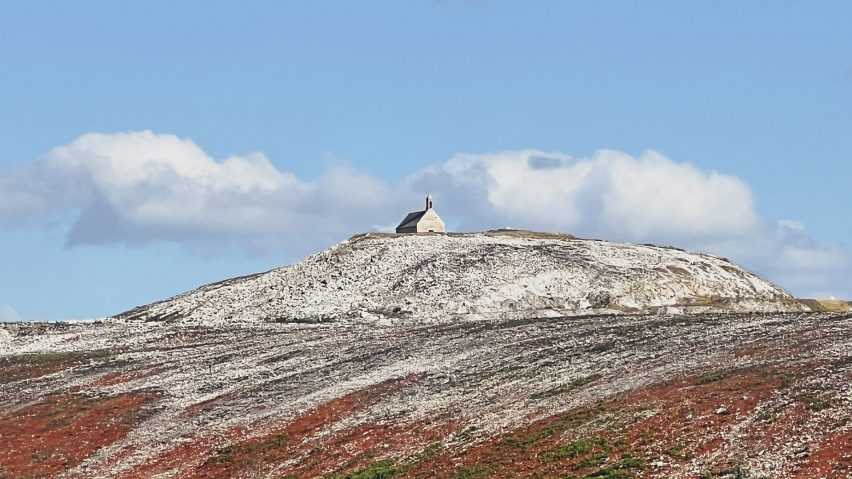
Ronan Bouroullec creates pared-back furnishings for 17th-century chapel in Brittany
Following the wildfires that ravaged Brittany's Arrée mountains last summer, Ronan Bouroullec has reimagined the interior of the region's historic Chapelle Saint-Michel de Brasparts as part of a full restoration.
Originally built at the end of the 17th century, the chapel is a modest building without lighting or electricity, perched on top of a prominent hill that rises above the surrounding moorland.
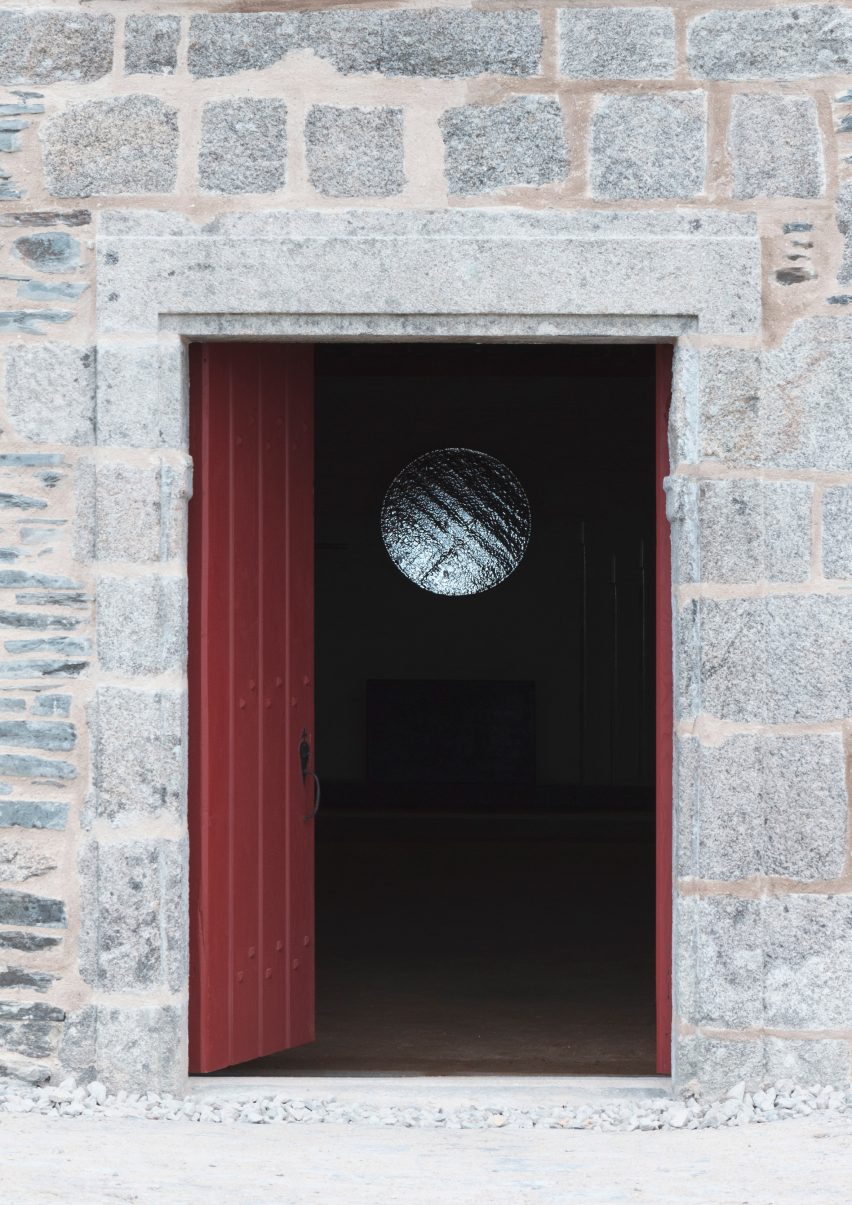
Breton businessman François Pinault, founder of luxury group Kering, financed the chapel's restoration after it was damaged during the wildfires, patching up its metre-thick stone walls, rammed-earth floors and the exposed oak frame supporting the slate roof.
Bouroullec, who was born and raised in Brittany, remembers the chapel from his childhood and was compelled to design a new altar and several furnishings for the building as part of the refurbishment.
Working in collaboration with local artisans, he used a trinity of roughly-hewn materials – granite, steel and glass – that would stand the test of time while reflecting the building's rugged rural location.
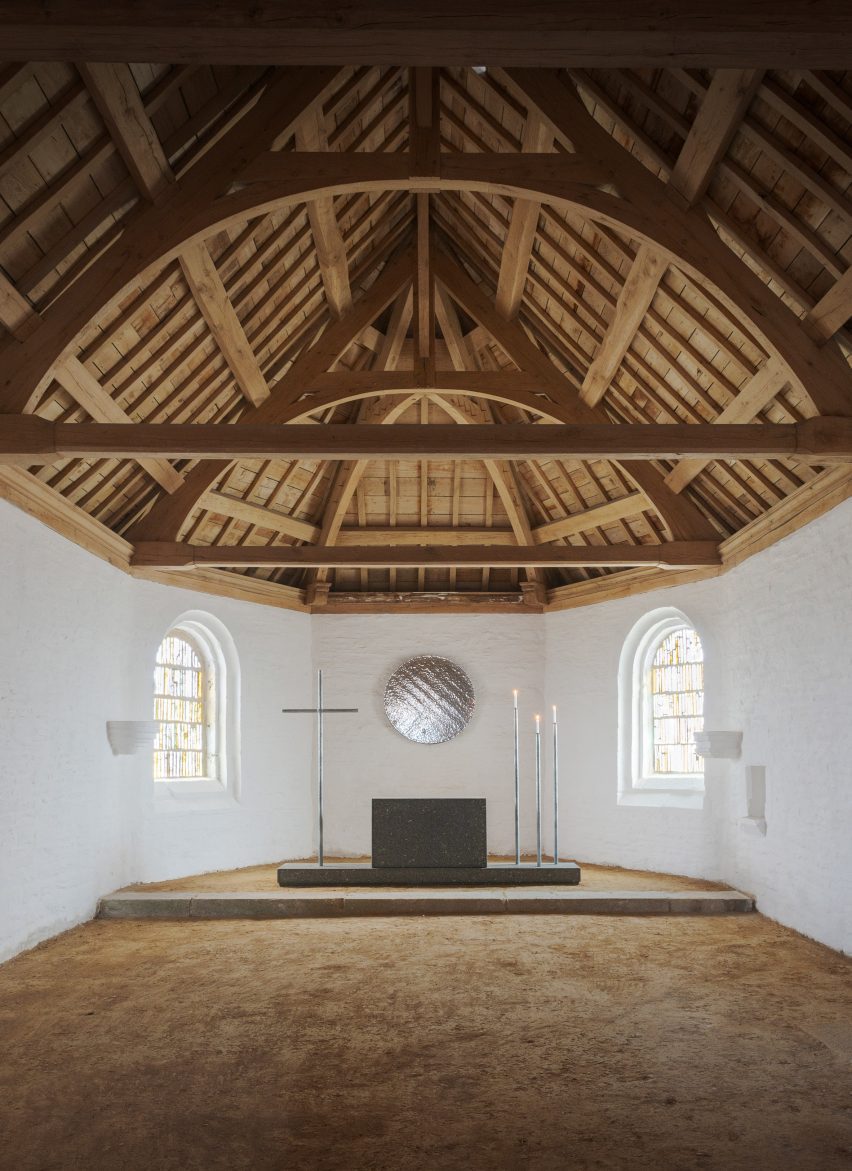
"Heavy enough not to be moved, sturdy enough not to be damaged, rough enough not to require cleaning, the elements that Ronan Bouroullec has placed in the chapel must succeed, despite or because of these characteristics, in creating a sensory experience," wrote Martin Bethenod, former CEO of Pinault's Bourse de Commerce museum, in an introductory text for the project.
"The bush-hammered granite, blurred glass, hammered steel, the choice of a galvanized finish to soften the contrast of the cross and candlesticks with the whiteness of the lime-rendered walls – each intervention combines sensations of roughness and softness, of force and tremor."
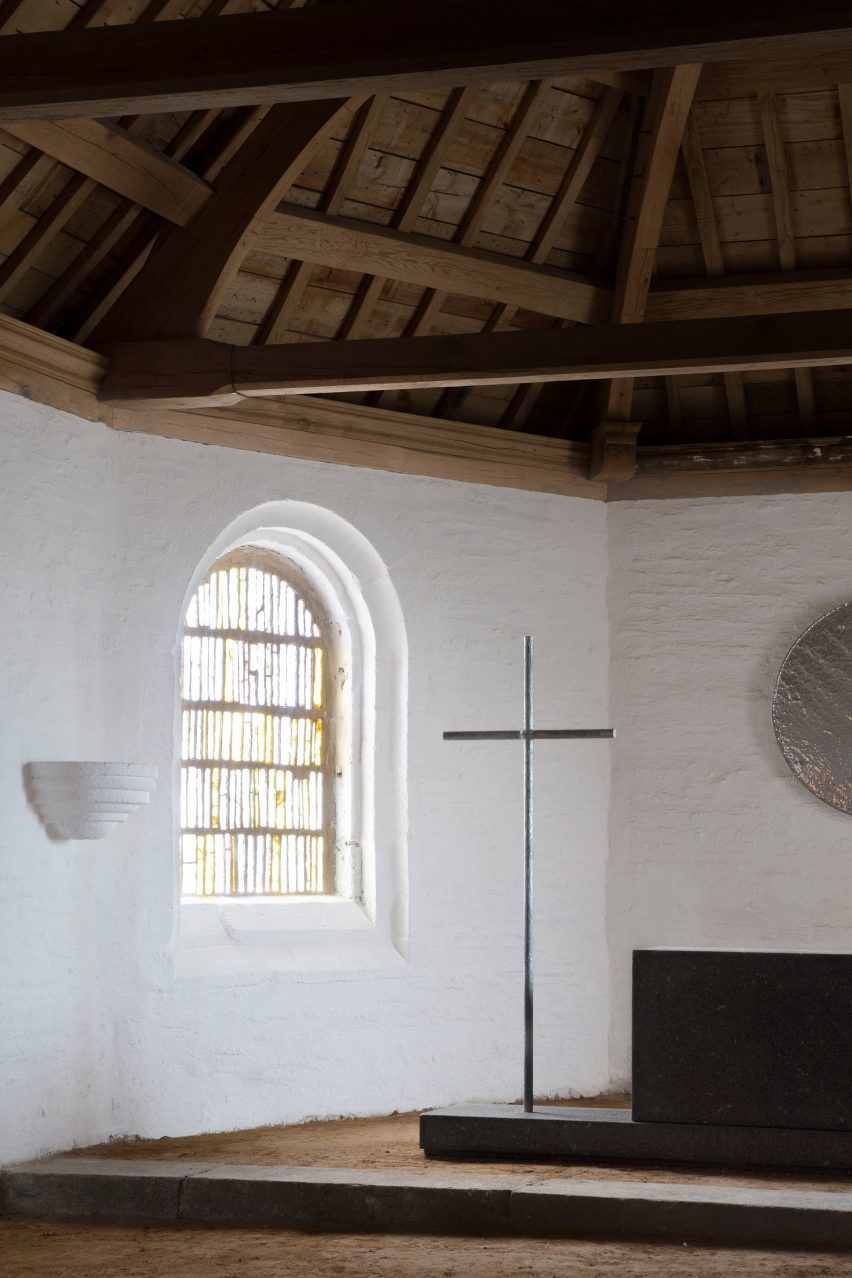
Nuit celtique de Huelgoat granite – quarried less than 15 kilometres away from the chapel – was cut into three pieces before being worked by local stone mason Christophe Chini to create an altarpiece, its horizontal base and a console table for candles and offerings.
Bethenod compares the dark stone, studded with shards of white, to "the starry night sky over the chapel, virtually devoid of light pollution".
The metal elements – a simple cross and a group of three tall candle holders, all in hammered steel – were the result of another collaboration, this time between Bouroullec and Roscoff-based metalworker Mathieu Cabioch.
Some of the candles stand directly on the altar while the rest are integrated into the Brutalist console table, which consists of a long slab of granite, seemingly supported by several of the steel candle holders.
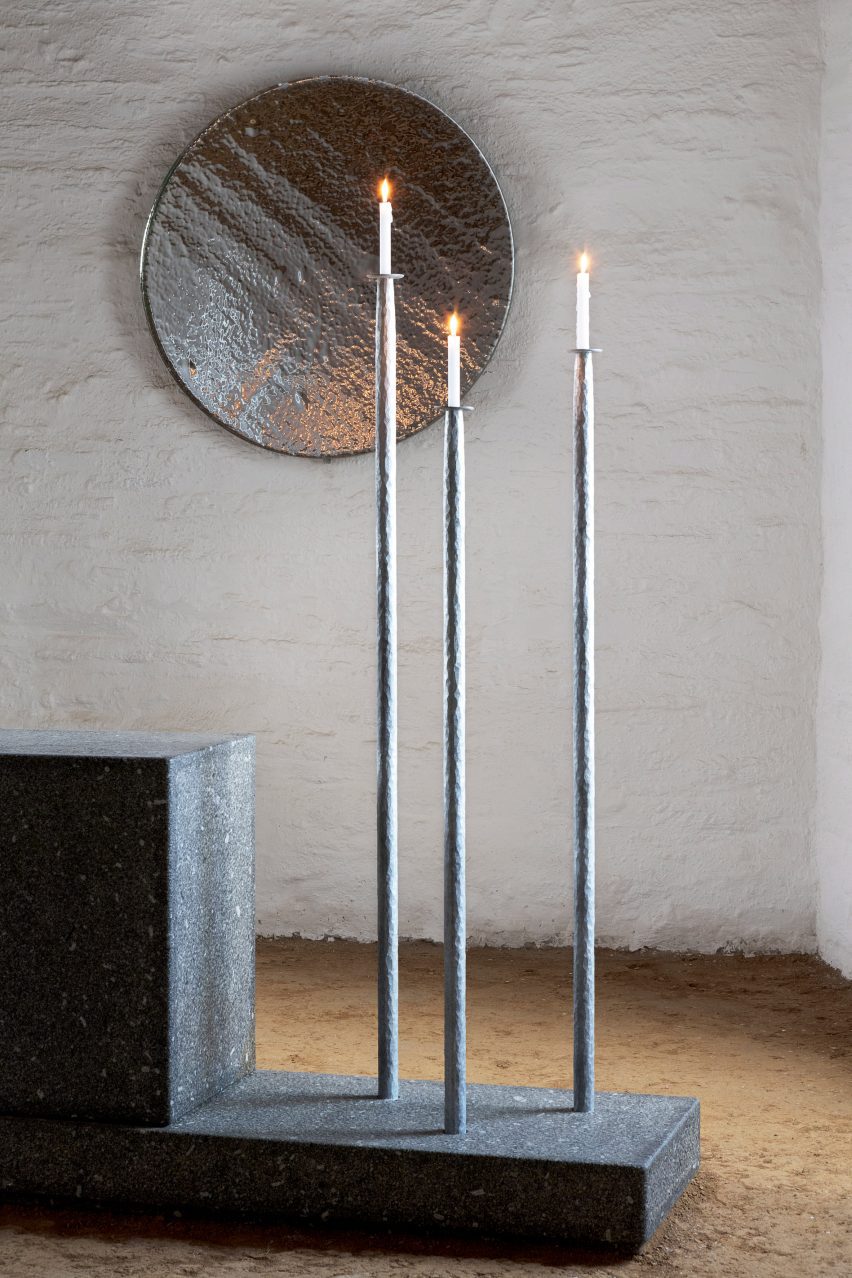
The final element in Bouroullec's material trinity is glass, in the form of a large mirrored disc that hangs centrally behind the altar.
Made by glassmakers from the Venice area, with whom Bouroullec has worked for several years, the piece was designed to create a dialogue with the two stained-glass windows in the apse, which are the chapel's only surviving decorative element.
"More than a mirror, more than an object, it is a light source without physical substance, as if a round hole had been made in the wall to reveal daylight, unpredictable and constantly changing," said Bethenod.
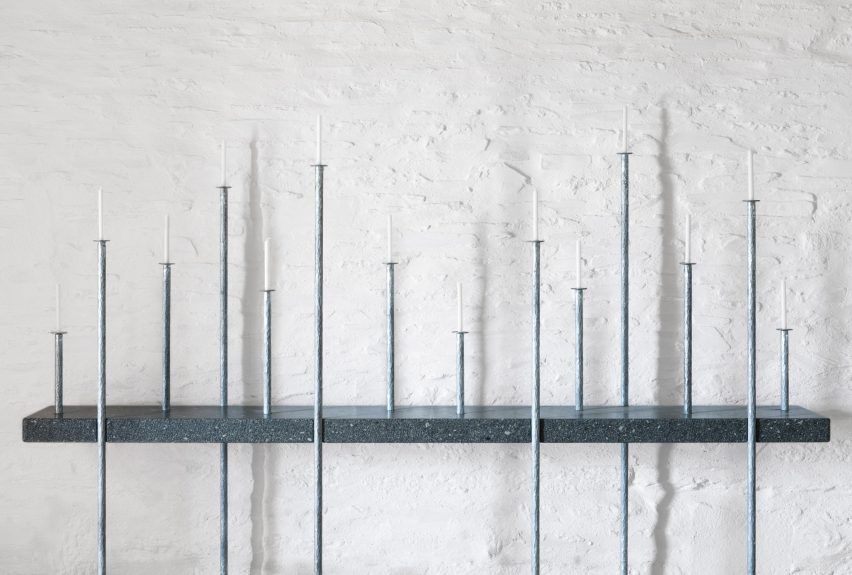
Brittany is home to some of the world's oldest standing architecture. Other projects making use of the region's historic buildings include this conversion of a 17th-century barn into a printmaker's studio.
The first new church to be built in Brittany in the 21st century was completed by Portuguese architect Álvaro Siza Vieira in 2018, featuring a sculptural composition of intersecting concrete forms.
The photography is by Claire Lavabre courtesy of Studio Bouroullec.